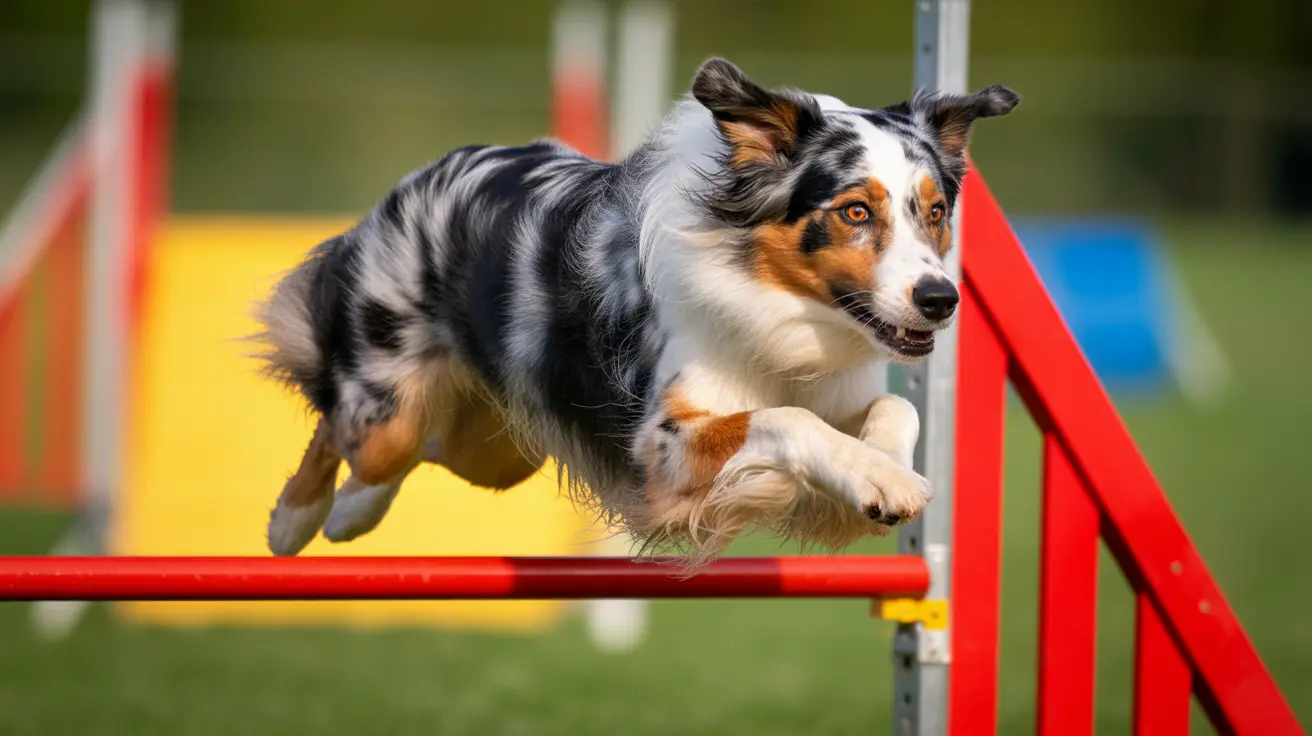A tan and white Shiba Inu sitting next to a wooden fence with an onion in its mouth
{
"title": "Is Garlic Safe for Dogs? Understanding Garlic Toxicity and How to Prevent It",
"subtitle": "Learn why garlic is dangerous for dogs, how to recognize symptoms of toxicity, and what steps to take to keep your pet safe.",
"name_en": "Is Garlic Safe for Dogs? Understanding Garlic Toxicity and How to Prevent It",
"news_category": "diseases-symptoms",
"short_description": "Learn about garlic toxicity in dogs, recognizing symptoms, and prevention tips to keep your pet safe.",
"long_description": "
For many pet owners, the question of whether garlic is safe for dogs remains a pressing concern. While garlic is celebrated in human cuisine for its flavor and health benefits, it poses significant risks to our canine companions. Understanding garlic toxicity in dogs is crucial for every dog owner, as even small amounts can lead to serious health complications.
The relationship between garlic and canine health is complex and potentially dangerous. Dogs process certain compounds in garlic differently than humans do, making what's beneficial for us potentially toxic for them. This comprehensive guide will explore why garlic poses such a significant danger to dogs and what you need to know to keep your pet safe.
The Science Behind Garlic Toxicity in Dogs
Garlic contains compounds like N-propyl disulfides and thiosulfates that can be highly toxic to dogs. These substances interfere with a dog's red blood cells, potentially leading to hemolytic anemia—a serious condition where red blood cells are destroyed faster than the body can replace them. As the red blood cell count falls, a dog's body becomes less able to transport oxygen efficiently, resulting in fatigue, weakness, and even organ failure if left untreated.
The effects of garlic in dogs can be particularly severe because these compounds damage the oxygen-carrying capacity of their blood cells. This toxic process can occur with any form of garlic, whether raw, cooked, or powdered. Unlike humans, who have mechanisms to detoxify these compounds, dogs are much more susceptible to their harmful effects, meaning no form of garlic is considered safe for canine consumption.
Special Considerations for Different Dog Breeds
Certain dog breeds are especially sensitive to garlic, including Akitas and Shiba Inus, due to their unique genetic makeup. These breeds are less equipped to handle the oxidative stress caused by garlic's toxic compounds and can suffer more severe symptoms with smaller amounts. Pet owners of these breeds should be particularly vigilant, as even an accidental ingestion could result in rapid onset of toxicity.
Recognizing Dog Garlic Toxicity Signs
Early recognition of garlic poisoning symptoms in dogs is crucial for prompt treatment and a better prognosis. Being able to identify the warning signs allows pet owners to seek immediate veterinary help, minimizing the risk of complications. Common indicators that a dog may have consumed garlic include:
- Lethargy and weakness
- Vomiting and diarrhea
- Pale or yellowish gums
- Rapid breathing
- Elevated heart rate
- Loss of appetite
- Dark-colored urine
- Collapse in severe cases
If you observe any combination of these symptoms, especially after a dog may have had access to garlic or foods containing garlic, seek veterinary care right away. Some symptoms can appear within hours, while others may develop over several days, making it essential to monitor your pet closely for delayed effects.
Immediate Response: What to Do If Your Dog Ate Garlic
If you suspect your dog has ingested garlic, acting quickly is vital for your pet's health and safety. Follow these recommended steps for an effective emergency response:
- Contact your veterinarian immediately – Professional guidance is crucial, even if your dog appears fine initially.
- Document the amount and type of garlic consumed – This information will help your veterinarian determine the best course of action.
- Monitor your pet for symptoms – Keep an eye out for any of the toxicity signs listed above.
- Follow professional medical advice precisely – Do not attempt to treat your dog on your own without veterinary supervision.
- Don't attempt home remedies without veterinary approval – Some common remedies can be dangerous and worsen your dog's condition.
Prompt action can make a significant difference in the outcome, so never hesitate to reach out to a veterinary professional if you have any doubts or concerns.
Treatment Options and Professional Care
When a dog is diagnosed with garlic poisoning, veterinary care usually combines several approaches aimed at minimizing toxin absorption and supporting the body's recovery. The standard treatment methods include:
- Decontamination procedures – This may involve inducing vomiting if the ingestion was recent and safe to do so.
- Administration of activated charcoal – Helps absorb any remaining toxins in the gastrointestinal tract.
- Intravenous fluid therapy – Supports kidney function and helps flush toxins from the body.
- Blood work monitoring – Regular testing is essential to monitor the extent of red blood cell damage and organ function.
- Potential blood transfusions in severe cases – If anemia becomes life-threatening, a blood transfusion may be required.
- Supportive care and monitoring – Close observation is necessary until the dog is stable and symptoms have resolved.
Recovery prospects are generally good for dogs that receive prompt professional care, especially if the garlic poisoning is identified and treated early.
Prevention Strategies
Prevention is always better than cure, especially when it comes to toxic foods like garlic. Dog owners should adopt the following safety measures to prevent accidental ingestion:
- Store all garlic products securely: Keep fresh garlic, powders, and cooked foods with garlic out of reach of pets.
- Read ingredient labels carefully: Processed foods and treats can contain hidden garlic or garlic powder.
- Inform household members about the risks: Everyone in the home should understand that garlic is dangerous for dogs.
- Avoid feeding table scraps: Many human dishes use garlic as a base ingredient, making table scraps risky.
- Keep dogs away from kitchen areas while cooking: Prevent curious pets from stealing dropped food or ingredients.
- Choose garlic-free dog foods and treats: Opt for products specifically formulated for canine safety.
By remaining vigilant and proactive, you can greatly reduce the chances of your dog ever being exposed to garlic or garlic-containing foods.
Common Misconceptions About Garlic and Dogs
Despite some popular claims about garlic’s potential benefits for dogs, such as its use as a natural flea treatment, scientific evidence does not support these assertions. In reality, the risks associated with garlic consumption in dogs far outweigh any supposed health benefits. Even in small amounts, garlic can cause significant and sometimes irreversible harm. Pet owners should always err on the side of caution and avoid supplementing or feeding any garlic to their dogs, regardless of anecdotal advice.
Frequently Asked Questions
- Is garlic poisonous to dogs? Yes, garlic is toxic and can cause severe health issues in dogs, including life-threatening anemia.
- What symptoms indicate garlic poisoning in dogs? Symptoms include lethargy, vomiting, diarrhea, pale gums, weakness, elevated heart rate, and other signs of anemia or gastrointestinal distress.
- How much garlic is toxic to a dog? Even 2 grams per pound of body weight can cause toxicity; one clove (about 5 grams) can be dangerous to a small dog.
- What should I do if my dog eats garlic? Contact your veterinarian immediately and try to determine how much was ingested.
- How quickly do symptoms of garlic poisoning appear? Symptoms can manifest within hours or may be delayed up to several days after ingestion, making vigilance important even if initial signs are absent.
- Can all dogs be affected by garlic equally? No, smaller dogs and certain sensitive breeds are at higher risk for severe toxicity due to lower body weight or genetic factors.
- Can garlic poisoning in dogs be treated? Yes, prompt veterinary treatment often leads to full recovery for mild to moderate cases, but delays can result in more serious consequences.
- What treatments are available for garlic poisoning? Treatments may include inducing vomiting, administering activated charcoal, fluid therapy, and hospitalization in severe cases for further monitoring and care.
- Does garlic powder or cooked garlic harm dogs? Yes, all forms of garlic are toxic—raw, cooked, or powdered—so they should all be avoided.
- How can I prevent my dog from garlic poisoning? Keep all garlic and foods containing garlic out of your dog’s reach and avoid sharing any food that may contain garlic or onion derivatives.
Understanding the danger of garlic to dogs is essential for responsible pet ownership. While garlic might be a staple in human cooking, it should never be part of your dog's diet. By staying informed and taking proper precautions, you can protect your furry friend from the serious risks of
For many pet owners, the question of whether garlic is safe for dogs remains a pressing concern. While garlic is celebrated in human cuisine for its flavor and health benefits, it poses significant risks to our canine companions. Understanding garlic toxicity in dogs is crucial for every dog owner, as even small amounts can lead to serious health complications.
The relationship between garlic and canine health is complex and potentially dangerous. Dogs process certain compounds in garlic differently than humans do, making what's beneficial for us potentially toxic for them. This comprehensive guide will explore why garlic poses such a significant danger to dogs and what you need to know to keep your pet safe.
The Science Behind Garlic Toxicity in Dogs
Garlic contains compounds like N-propyl disulfides and thiosulfates that can be highly toxic to dogs. These substances interfere with a dog's red blood cells, potentially leading to hemolytic anemia—a serious condition where red blood cells are destroyed faster than the body can replace them. As the red blood cell count falls, a dog's body becomes less able to transport oxygen efficiently, resulting in fatigue, weakness, and even organ failure if left untreated.
The effects of garlic in dogs can be particularly severe because these compounds damage the oxygen-carrying capacity of their blood cells. This toxic process can occur with any form of garlic, whether raw, cooked, or powdered. Unlike humans, who have mechanisms to detoxify these compounds, dogs are much more susceptible to their harmful effects, meaning no form of garlic is considered safe for canine consumption.
Special Considerations for Different Dog Breeds
Certain dog breeds are especially sensitive to garlic, including Akitas and Shiba Inus, due to their unique genetic makeup. These breeds are less equipped to handle the oxidative stress caused by garlic's toxic compounds and can suffer more severe symptoms with smaller amounts. Pet owners of these breeds should be particularly vigilant, as even an accidental ingestion could result in rapid onset of toxicity.
Recognizing Dog Garlic Toxicity Signs
Early recognition of garlic poisoning symptoms in dogs is crucial for prompt treatment and a better prognosis. Being able to identify the warning signs allows pet owners to seek immediate veterinary help, minimizing the risk of complications. Common indicators that a dog may have consumed garlic include:
- Lethargy and weakness
- Vomiting and diarrhea
- Pale or yellowish gums
- Rapid breathing
- Elevated heart rate
- Loss of appetite
- Dark-colored urine
- Collapse in severe cases
If you observe any combination of these symptoms, especially after a dog may have had access to garlic or foods containing garlic, seek veterinary care right away. Some symptoms can appear within hours, while others may develop over several days, making it essential to monitor your pet closely for delayed effects.
Immediate Response: What to Do If Your Dog Ate Garlic
If you suspect your dog has ingested garlic, acting quickly is vital for your pet's health and safety. Follow these recommended steps for an effective emergency response:
- Contact your veterinarian immediately – Professional guidance is crucial, even if your dog appears fine initially.
- Document the amount and type of garlic consumed – This information will help your veterinarian determine the best course of action.
- Monitor your pet for symptoms – Keep an eye out for any of the toxicity signs listed above.
- Follow professional medical advice precisely – Do not attempt to treat your dog on your own without veterinary supervision.
- Don't attempt home remedies without veterinary approval – Some common remedies can be dangerous and worsen your dog's condition.
Prompt action can make a significant difference in the outcome, so never hesitate to reach out to a veterinary professional if you have any doubts or concerns.
Treatment Options and Professional Care
When a dog is diagnosed with garlic poisoning, veterinary care usually combines several approaches aimed at minimizing toxin absorption and supporting the body's recovery. The standard treatment methods include:
- Decontamination procedures – This may involve inducing vomiting if the ingestion was recent and safe to do so.
- Administration of activated charcoal – Helps absorb any remaining toxins in the gastrointestinal tract.
- Intravenous fluid therapy – Supports kidney function and helps flush toxins from the body.
- Blood work monitoring – Regular testing is essential to monitor the extent of red blood cell damage and organ function.
- Potential blood transfusions in severe cases – If anemia becomes life-threatening, a blood transfusion may be required.
- Supportive care and monitoring – Close observation is necessary until the dog is stable and symptoms have resolved.
Recovery prospects are generally good for dogs that receive prompt professional care, especially if the garlic poisoning is identified and treated early.
Prevention Strategies
Prevention is always better than cure, especially when it comes to toxic foods like garlic. Dog owners should adopt the following safety measures to prevent accidental ingestion:
- Store all garlic products securely: Keep fresh garlic, powders, and cooked foods with garlic out of reach of pets.
- Read ingredient labels carefully: Processed foods and treats can contain hidden garlic or garlic powder.
- Inform household members about the risks: Everyone in the home should understand that garlic is dangerous for dogs.
- Avoid feeding table scraps: Many human dishes use garlic as a base ingredient, making table scraps risky.
- Keep dogs away from kitchen areas while cooking: Prevent curious pets from stealing dropped food or ingredients.
- Choose garlic-free dog foods and treats: Opt for products specifically formulated for canine safety.
By remaining vigilant and proactive, you can greatly reduce the chances of your dog ever being exposed to garlic or garlic-containing foods.
Common Misconceptions About Garlic and Dogs
Despite some popular claims about garlic’s potential benefits for dogs, such as its use as a natural flea treatment, scientific evidence does not support these assertions. In reality, the risks associated with garlic consumption in dogs far outweigh any supposed health benefits. Even in small amounts, garlic can cause significant and sometimes irreversible harm. Pet owners should always err on the side of caution and avoid supplementing or feeding any garlic to their dogs, regardless of anecdotal advice.
Frequently Asked Questions
- Is garlic poisonous to dogs? Yes, garlic is toxic and can cause severe health issues in dogs, including life-threatening anemia.
- What symptoms indicate garlic poisoning in dogs? Symptoms include lethargy, vomiting, diarrhea, pale gums, weakness, elevated heart rate, and other signs of anemia or gastrointestinal distress.
- How much garlic is toxic to a dog? Even 2 grams per pound of body weight can cause toxicity; one clove (about 5 grams) can be dangerous to a small dog.
- What should I do if my dog eats garlic? Contact your veterinarian immediately and try to determine how much was ingested.
- How quickly do symptoms of garlic poisoning appear? Symptoms can manifest within hours or may be delayed up to several days after ingestion, making vigilance important even if initial signs are absent.
- Can all dogs be affected by garlic equally? No, smaller dogs and certain sensitive breeds are at higher risk for severe toxicity due to lower body weight or genetic factors.
- Can garlic poisoning in dogs be treated? Yes, prompt veterinary treatment often leads to full recovery for mild to moderate cases, but delays can result in more serious consequences.
- What treatments are available for garlic poisoning? Treatments may include inducing vomiting, administering activated charcoal, fluid therapy, and hospitalization in severe cases for further monitoring and care.
- Does garlic powder or cooked garlic harm dogs? Yes, all forms of garlic are toxic—raw, cooked, or powdered—so they should all be avoided.
- How can I prevent my dog from garlic poisoning? Keep all garlic and foods containing garlic out of your dog’s reach and avoid sharing any food that may contain garlic or onion derivatives.
Understanding the danger of garlic to dogs is essential for responsible pet ownership. While garlic might be a staple in human cooking, it should never be part of your dog's diet. By staying informed and taking proper precautions, you can protect your furry friend from the serious risks of garlic toxicity.






